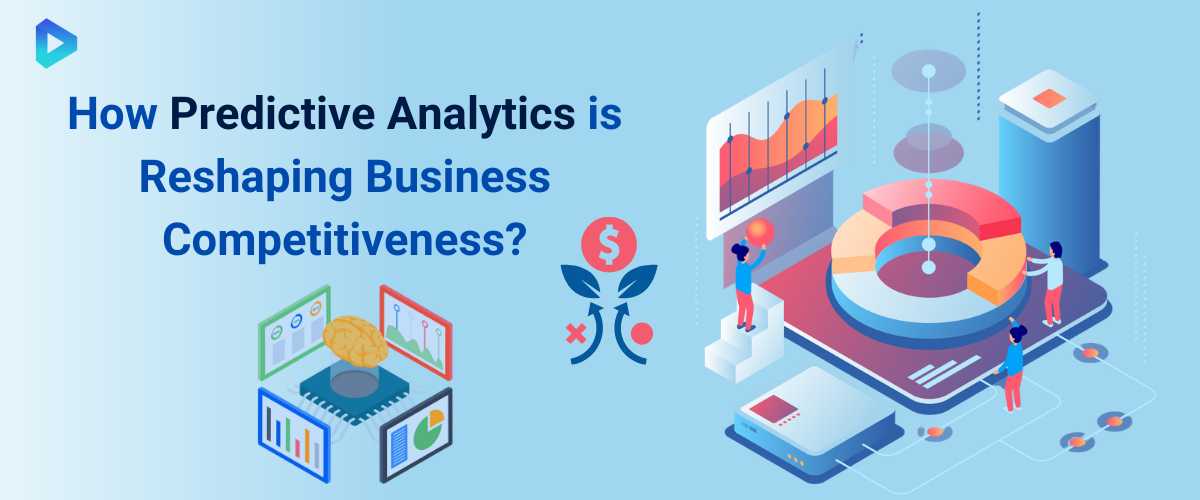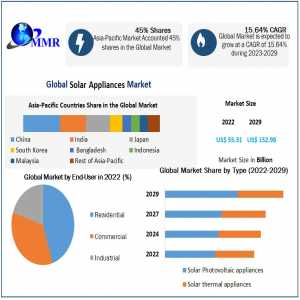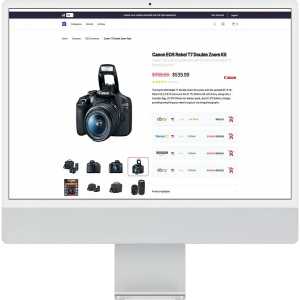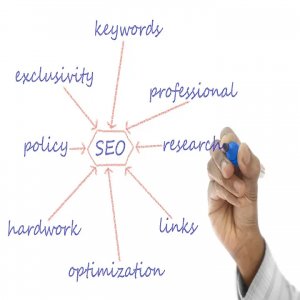
Why Predictive Analytics Is Crucial For Modern Enterprises?

Every business generates massive amounts of data daily, but not all companies leverage it effectively. Predictive analytics enables enterprises to convert raw data into actionable insights, helping them forecast demand, reduce operational costs, and enhance customer engagement. Whether through AI-powered models, machine learning algorithms, or cloud-based analytics, predictive analytics is reshaping business strategies. Organizations that integrate predictive analytics into their decision-making processes can anticipate challenges, seize new opportunities, and outperform competitors. This blog discusses the importance of predictive analytics and how businesses can use it to maintain a competitive edge.
The Growing Impact of Predictive Analytics Worldwide
Predictive analytics is revolutionizing industries, driving innovation, and transforming data into actionable insights.
How Predictive Analytics World Is Shaping Industries?
Predictive analytics has become a cornerstone of modern industries, enabling smarter decision-making through data-driven insights. By analyzing historical data, businesses can forecast trends, anticipate customer behaviors, and optimize their operations. Sectors like healthcare, retail, and finance are leveraging predictive tools to stay competitive. For instance, retailers use predictive analytics to personalize customer experiences, while healthcare providers predict patient needs for better care.
Key industries reshaping through predictive analytics include:
- Finance: Fraud detection and risk assessment.
- Manufacturing: Demand forecasting and inventory management.
- Marketing: Targeted campaigns and customer segmentation.
As industries embrace these solutions, predictive analytics continues to redefine operational efficiency and innovation.
Key Trends in Global Predictive Analytics Adoption
The adoption of predictive analytics is growing exponentially, driven by advancements in artificial intelligence, big data, and machine learning. Businesses are capitalizing on these trends to gain a competitive edge. Cloud-based predictive analytics tools offer scalability and accessibility, making them a popular choice among organizations of all sizes.
Notable trends include:
- AI Integration: Enhanced accuracy in predictions.
- Real-Time Analytics: Faster and more agile decision-making.
- Self-Service Tools: Empowering teams with user-friendly interfaces.
As predictive analytics tools become more sophisticated, they’re becoming integral to global business strategies. Staying ahead means adopting these trends to unlock untapped potential.
Overcoming Challenges in Implementing Predictive Solutions
While predictive analytics offers immense benefits, implementing it comes with challenges. Data silos, integration complexities, and skill gaps often hinder success. Organizations must focus on building robust data strategies and investing in training to address these issues.
Key steps to overcome challenges:
- Consolidate data from disparate sources into unified systems.
- Train teams to interpret predictive insights effectively.
- Utilize tools with built-in AI to simplify workflows.
Organizations that overcome these barriers can unlock predictive analytics’ full potential, driving efficiency, innovation, and growth.
Predictive Data Modeling for Smarter Business Decisions
Transform raw data into actionable insights for better decisions with predictive data modeling.
Understanding the Basics of Predictive Data Modeling
Predictive data modeling involves using statistical techniques and machine learning algorithms to analyze historical data and predict future trends. It identifies patterns and relationships in data, allowing businesses to anticipate customer behaviors, market trends, and operational risks.
At its core, predictive modeling focuses on:
- Input Variables: Data points that influence outcomes.
- Algorithms: Techniques like regression analysis and decision trees.
- Outputs: Probabilities or predictions guiding strategic decisions.
By applying these models, businesses can align their strategies with data-backed insights, enhancing efficiency, customer satisfaction, and overall competitiveness in the market.
The Role of Data Quality in Predictive Accuracy
The accuracy of predictive models relies heavily on the quality of data used. Inconsistent, incomplete, or outdated data can lead to unreliable predictions, affecting decision-making processes. Organizations must prioritize data cleanliness and consistency for optimal outcomes.
Steps to ensure high data quality:
- Data Cleaning: Remove duplicates and correct inaccuracies.
- Integration: Consolidate data from multiple sources into a unified format.
- Regular Updates: Ensure datasets reflect current conditions.
High-quality data enables predictive models to generate precise insights, empowering businesses to make confident, informed decisions that drive growth and efficiency.
Improving Business Forecasting with Predictive Data Modeling
Predictive data modeling enhances forecasting accuracy by analyzing historical trends and projecting future outcomes. Businesses can anticipate market demand, allocate resources efficiently, and reduce risks by leveraging these insights.
For example, retailers use predictive models to optimize inventory levels, ensuring products are available without overstocking. Similarly, manufacturers forecast production needs to align with demand fluctuations.
The benefits include:
- Reduced Costs: By minimizing waste and improving resource allocation.
- Enhanced Planning: Allowing teams to strategize based on reliable forecasts.
- Competitive Edge: Staying ahead by proactively addressing market trends.
Adopting predictive modeling transforms forecasting into a strategic asset, driving smarter, data-driven decisions across industries.
The Role of Predictive Analytics in Business Growth
Harness predictive analytics to unlock opportunities and drive sustainable business growth.
Why Businesses Must Adopt Predictive Analytics Now?
In today’s competitive landscape, businesses need to adopt predictive analytics to stay ahead. Predictive analytics uses data, algorithms, and machine learning to forecast future trends, enabling companies to make proactive decisions. By identifying potential risks and opportunities early, businesses can optimize strategies and reduce uncertainty.
For instance, retail businesses can forecast seasonal demand spikes, ensuring they stock the right products at the right time. Predictive analytics also helps reduce costs by streamlining supply chain processes and minimizing inefficiencies. Organizations that integrate predictive tools early gain a significant advantage, improving their agility and ability to respond to market changes. With rapid advancements in AI, the barriers to adopting predictive analytics are lower than ever, making now the ideal time to embrace this transformative technology.
How Predictive Analytics Enhances Decision-Making & Efficiency?
Predictive analytics transforms decision-making by providing actionable insights derived from data patterns. It eliminates guesswork, enabling leaders to make informed choices backed by real evidence. For example, predictive models can help businesses anticipate customer needs, allowing for personalized marketing campaigns that improve engagement and conversions.
Efficiency is another key benefit. Predictive analytics streamlines operations by automating complex processes like demand forecasting and inventory management. By identifying inefficiencies and optimizing resource allocation, businesses save both time and money. In industries such as finance, predictive tools detect fraudulent activities before they escalate, safeguarding assets and reputation. With enhanced decision-making and operational efficiency, predictive analytics becomes a cornerstone of sustainable growth and competitive advantage.
Integrating Predictive Analytics into Business Workflows
To maximize the benefits of predictive analytics, it must be seamlessly integrated into existing workflows. Start by identifying key areas where predictive insights can have the greatest impact, such as marketing, operations, or customer service. Next, ensure data collection processes are robust and secure, as accurate inputs are essential for reliable outputs. Businesses should invest in user-friendly analytics platforms that empower employees to access insights without requiring extensive technical knowledge. Training teams to interpret predictive outputs and incorporate them into their daily decision-making fosters a data-driven culture. Regularly evaluating the performance of predictive models ensures their relevance and accuracy over time.
HAVE QUESTION?
Call Us: +1 (347) 9739732, +91-90399-28143
Email Us: inquiry@digiprima.com, ashesh@digiprima.com
Author Bio
Article Comments
No Comments!
At present there are zero comments on this article.
Why not be the first to make a comment?
Similar Articles
Search Pages
User Upgrade
account to full use of editor,
Including hyperlinks
Article Categories
There are zero sub-categories in this parent category.
There are zero sub-categories in this parent category.

















